How to plow correctly with a plow on a walk-behind tractor?
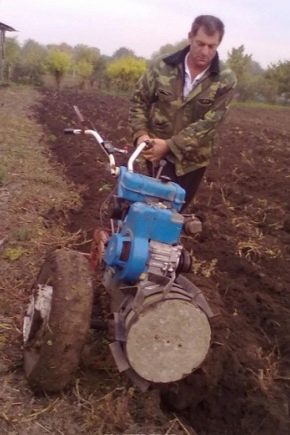
Motoblock is a versatile unit for agricultural work in a personal or suburban area. It can be used to plow the land, plant and harvest. The purchase of such equipment will greatly facilitate agricultural work.

Views
With the help of walk-behind tractors, you can perform different types of agricultural work. Depending on the size of the cultivated area and the demand for equipment in different fields of activity, the technique is acquired in light, medium and heavy classes.
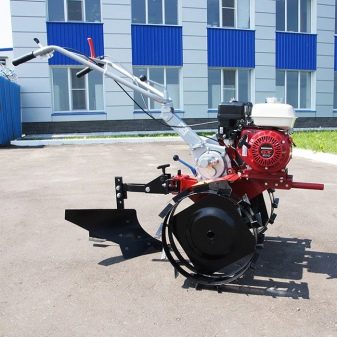
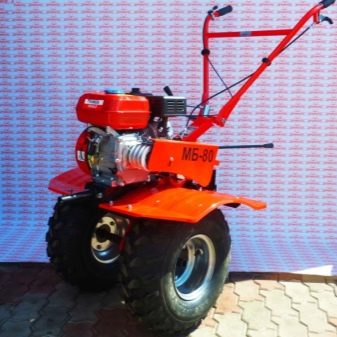
Lungs
This mini-technique is often called a motor cultivator. Its power does not exceed 4 and a half horsepower, therefore it is cheaper than medium and large units. The cost of a lightweight model is from 12 to 22 thousand rubles. The advantages include the light weight of the monoblock and the availability of processing inconvenient areas due to the small grip of the cutter.
The downside is the fast overheating of a low-power motor, which means that you will have to work with such equipment for a short time. In addition, the depth of the excavated soil is less than that of a heavy walk-behind tractor. In addition, light vehicles do not have attachments for additional equipment.
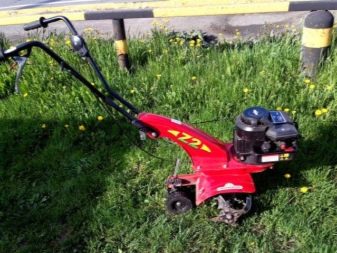
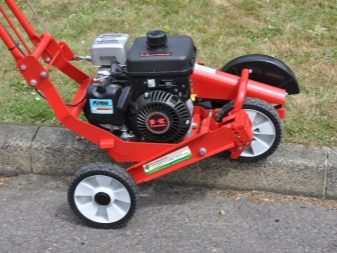
Average
This technique is rear-wheel drive. Motor power - 5-12 horsepower. The device is capable of treating a plot of half a hectare. The motoblock weighs from 50 to 70 kilograms, its cost is 30-40 thousand rubles. On most motoblocks of this category, you can attach a plow and other equipment.
This technique has 2 gears, is equipped with a headlight. Compared to a heavy walk-behind tractor, the average one is more maneuverable, but the depth of plowing of the earth by it does not exceed 12 cm.And this is unacceptable for planting some plants

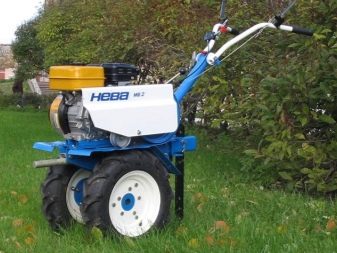
Heavy
With this equipment, you can plow huge areas, significantly exceeding an area of half a hectare. Engine power - 12-30 horsepower, price - 70-100 thousand rubles. A plow, trailer, hiller, potato digger and other equipment can be attached to a heavy walk-behind tractor. It is easier to work with such a technique and many times faster than with light and medium ones. It regulates the steering wheel and wheels.
The disadvantages include the heavy weight of the model, lack of access to non-standard surface areas. In addition, such a technique has to be turned with effort. As for the types of plows for a walk-behind tractor, they are reversible with two bodies that plow the soil using a blade, or rotary ones that plow the soil thanks to rotating discs.
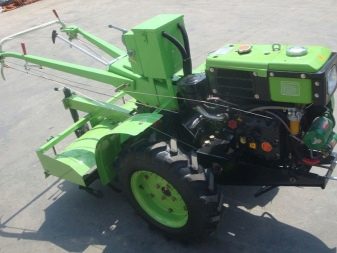

How to setup?
Installation of wheels
Before the start of the summer season, you will need to set up a walk-behind tractor for plowing. Before plowing, rubber wheels must be replaced with metal lug wheels. This must be done so that the unit does not slip during excavation work. The choice of wheels should be taken seriously, otherwise it will not work to plow the soil compacted after winter.
Firstly, their diameter should be at least 55 cm, and secondly, the width of the wheel is selected within 20 cm, otherwise, if the wheels are too narrow, the walk-behind tractor will lose stability and it will swing in different directions. If the diameter is too small, the gearbox will catch on the ground and may become unusable, and it, as you know, is the "heart" of the walk-behind tractor.
For wheels, a monolithic rim is suitable so that the earth does not clog in the lugs. Work with wheels is carried out by placing the walk-behind tractor on special stands.The height of the hill directly depends on the depth of future plowing: for working with ordinary soil - 20 cm, with frozen soil - 25 cm.

Installing the plow
Thanks to the couplings (fasteners), the plow is mounted to the walk-behind tractor. This work is best done with an assistant, as it will require some effort and skill. First, the hitch is mounted on the walk-behind tractor, then connected to the plow mount with steel pins. The connection should not be installed tightly, a slight horizontal movement is necessary, otherwise, when processing the soil, the walk-behind tractor will "skid" to the sides due to the unevenness of the soil.
After basic installation, the plow needs to be adjusted. You will have to tinker with the adjustment - the quality of plowing depends on it. The plows are tilted using the mountings so that the heel is horizontal to the ground. The adjusted walk-behind tractor is placed on the ground and the steering wheel is checked - it should be in the area of the plowman's belt.
It remains to check whether the unit is ready for earthwork. It is necessary to make several test furrows with depth measurement, to check the quality of the soil dump. Pay attention to the strip between the furrows - it should not be too wide (no more than 10 cm) or crossed by a plow.

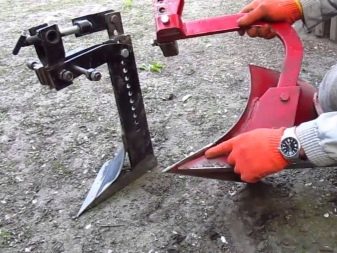
Starting the walk-behind tractor
Every time before starting the engine, the oil level and the amount of fuel are checked - a lack of both can damage the engine. The diesel engine is fueled with seasonal diesel fuel (for warm or cold seasons). Before starting, check the operation of the clutch, steering wheel. Movements in systems occur with a certain effort.
To start the engine, you need to free the tubes from air with an electric starter, which will subsequently be filled with diesel fuel. During manual start, it is necessary to give access to fuel, to produce gas and a certain amount of rocking by the starter. The decompressor returns to its original state and the engine starts.
For two-stroke engines, gasoline is used (the proportions of dilution with oil are indicated in the instructions). To start the walk-behind tractor, open the gas tank, direct the handle to "start", move the starter several times without turning on the ignition. And only then turn on the ignition to start the engine. Further, the handle should be at the "Work" mark.
With an electric starter, simply turn on the ignition and start the engine.
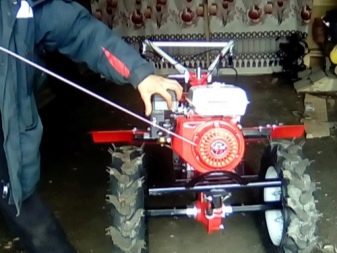
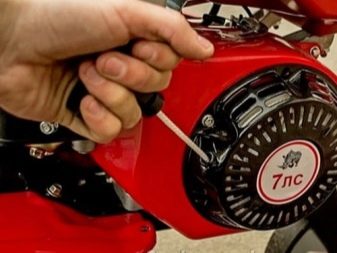
Plowing a plot
With the help of a walk-behind tractor, a small area can be processed in half an hour (if plowed correctly), while manual digging will take a week. The technique can be used to prepare a small field or vegetable garden for planting.
The equipment is delivered to the site where it is necessary to plow the soil. To work with a plow, the equipment must be of a heavy or medium class. A tiller weighing less than 70 kilograms will not pull the plow.
Knowing the boundaries of the field, the furrows should be made in the length of the section - this will reduce the number of turns of the walk-behind tractor. During operation, the equipment always “pulls” slightly to the right, therefore, for a clear plowing of the first furrow, the limiting twine should be pulled. He will mark the border of the site.
For subsequent furrows, twine is no longer required.
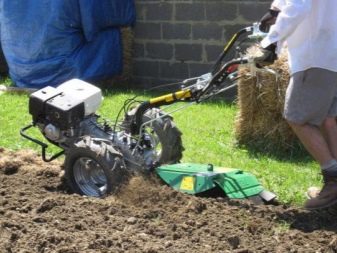
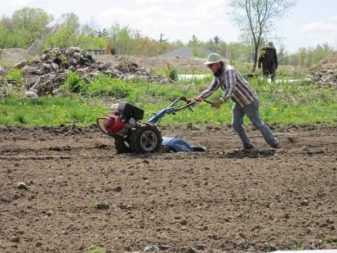
The motoblock is controlled from the side of the unplowed field, so the steering wheel is turned slightly to the left. The first furrow is always a trial one: it is made at low speed, then the plowing depth is checked - if it is less than 15-25 cm, then the unit will have to be adjusted.
Having reached the border of the site, the walk-behind tractor is turned around, the right wheel is set in the furrow (this position "skews" the unit according to the horizon). It turns out that only in the first row the plow takes a vertical position, and then the share, together with the walk-behind tractor, tilts slightly, so the plow should be slightly shifted in the opposite direction.
To do this, loosen the nut, adjust the position of the plow and tighten the nut again. A correctly aligned plow will ensure smooth, high-quality plowing.
Firm soils are best handled when they are damp - they may need to be plowed several times.
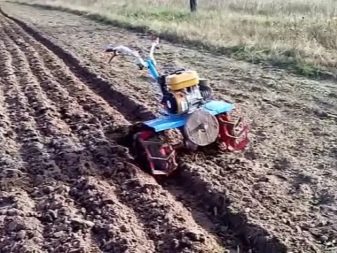
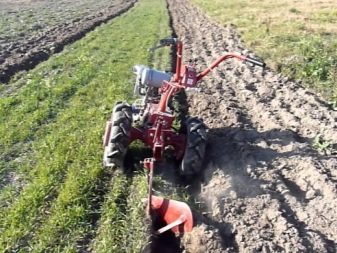
Do not push the plow while driving. It is necessary to monitor the operation of the engine - it should not overheat. If this happens, the equipment is given time to "rest", otherwise it will fail.
When plowing, the land is enriched with oxygen. At this time, fertilizers can be applied to the soil. It is useful to loosen the ground in the fall, then in the spring, after the snow melts, the soil is well saturated with moisture. If you have to dig the same area from year to year using a walk-behind tractor, the direction of the furrows should be changed from vertical to horizontal - so the soil will acquire a more uniform structure.

For the features of working with a plow for a walk-behind tractor, see the video below.



































































The comment was sent successfully.